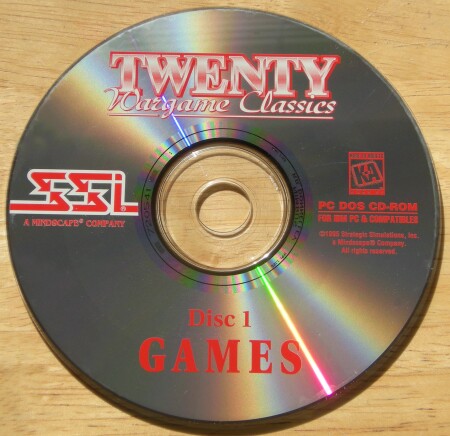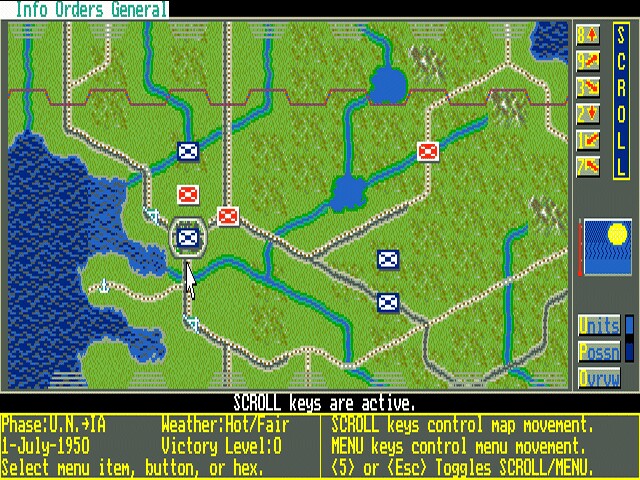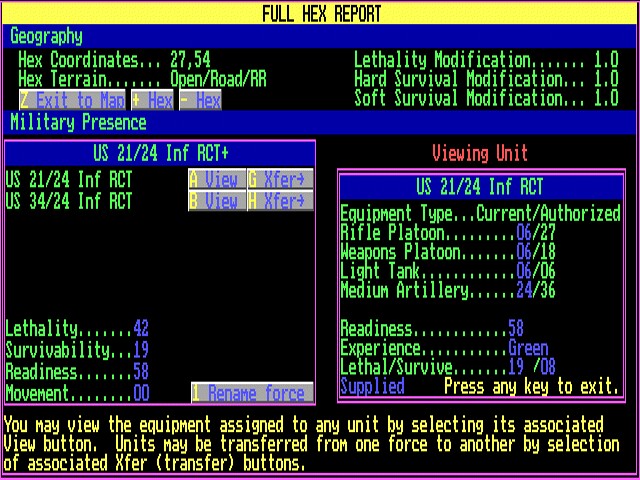
Actual Game
Conflict: Korea1-Click Install
|
Conflict: Korea is an operational level simulation of the Korean War. In addition to covering the first year of that conflict between 25 June 1950 to 22 May 1951, there is a hypothetical scenario which sees hostilities resuming between the two Koreas in 1995.
Four scenarios can be played, taking either side. The first three are based on the historical conflict - The Dragon Wakes (Jun 1950 - Jun 1951), starting with the invasion of South Korea by the North Korean People's Army; Operation Chromite (Sep 1960 - Jun 1951), re-enacting MacArthur's inspired Inchon landings and the Pusan perimeter break-out; and Cold Steel (Nov 1950 - Jun 1951), showcasing the massive intervention by the Chinese People's Liberation Army. The final scenario, Tomorrow's War, has the NKPA pushing south in 1995 when the US is heavily involved elsewhere and plays a limited role (although the presence of USAF, USN, and USMC air units more than make up for the absence of land forces).
Players control regimental, brigade, and division-size units, and these can be combined into corps and army level units. New names can be given to the combined units, or even existing units. The air war can be turned over to the computer, though I feel few wargamers would do this (grin). Players define missions like air superiority, ground attack, and interdiction to individual air groups and wings. There are five levels of difficulty which can be set or made random, with Challenging being the default whereby both sides recovery rates are even. Even at this level, the computer AI is no pushover. One no longer sees things like over- -aggression to the point of destroying whole units, the AI is more likely to go around units to cut-off supply than simply head-butting them. CPLA intervention can be set to fixed or historical, with the latter having a measure of uncertainty as to whether or not the Chinese will intervene once UN forces have crossed the 38th parallel.
Aside from the usual terrain, exhaustion, logistics, etc. factors which players have to consider, the effects of refugees clogging the roads, communist guerrillas, and mine warfare have been added to make the simulation that much more realistic.
1950s - The UN player must give ground to the advancing NKPA hordes initially as he is in no position to make a respectable defence line. Republic of Korea troops should be used to screen the NKPA advance, with reinforcements digging in to set a stand around Taejon and Taegu. Do not commit US units immediately after they arrive or they'll be destroyed piecemeal. Wait for reinforcements and let the NKPA run themselves ragged. Judicious use of air interdiction missions will expediate this. It may be nice to see your air units blast NKPA corps, but interdiction will do far worse to the enemy. Once the US 1st Marine Division arrives, set an amphibious invasion at Inchon (as was done historically) and proceed to cut off the NKPA supply lines. The entire NKPA army may then be trapped in South Korea, allowing the reinforced UN units to mop them up. When advancing into North Korea, the UN player must be prepared to form a solid defence line quickly if it encounters the CPLA.
The Communist player must push south in all haste quickly before the UN digs in. If he can break the line at Pusan, victory will be assured. If not, as much as half the troops should withdraw to the 38th parallel to draw the UN forces to invade North Korea. Then pray for Chinese intervention.
1995 - For the UN, Seoul should be contested as fiercely as possible until US reinforcements arrive. UN airpower is supreme in this scenario and can do much damage. One should neutralize the North Korean air force as quickly as possible, then destroy his supply with interdictions. Airstrikes on units can be given when necessary. Do not think for a moment that the modern ROK forces can easily contain the NKPA. In many ways, this scenario is tougher than the 1950s scenarios.
The Communist player should attack ROK units massively to ensure advance. A prime objective is Seoul and the cities around it. If they can be captured and held, victory will be achieved. The east coast should not be forgotten, or arriving US units will smash through. This scenario basically pits NKPA numbers versus UN firepower.
This is a highly enjoyable game with an easy interface and many factors to consider when planning strategy. A minor infraction was the absence of any sound effects except for beeps. Nevertheless, a worthy third effort from Norm Kroger.






